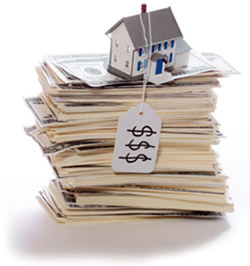What’s the Right Purchase Price?
 You have a real estate client who is interested in investing in the single-family home rental market. You’ve searched and found a cute three-bedroom in a good neighborhood at what seems to be a reasonable price. It looks like it might be a great investment property for your client. But how do you know for sure?
You have a real estate client who is interested in investing in the single-family home rental market. You’ve searched and found a cute three-bedroom in a good neighborhood at what seems to be a reasonable price. It looks like it might be a great investment property for your client. But how do you know for sure?
The most accurate way to determine whether a potential investment property will meet your investment client’s profitability goals (or your own as an agent-investor) is through a detailed property analysis. And because cash flow is the top priority, figuring out what you should pay for a single-family investment home is the best place to start.
Know the market
The first step in determining the right price is to study the market where you’re thinking about investing. Research the neighborhood to learn about the economy, demographics, and crime rate.
Explore the area from the ground. Look at property types and other characteristics of the area and familiarize yourself with amenities that renters will find desirable, such as schools, bus routes, shopping, parks, and libraries. People who are knowledgeable about the market, such as local real estate agents, property managers, and other investors are another good source of information.
Determine the fair market value
Your next step is to figure out a property’s fair market value. To do this, you need to know:
- The property’s list price
- Sales of comparable properties in the area (called comps)
This information will help you determine the average price per square foot of properties in the area. Then calculate the fair market value, which is equal to the price per square foot multiplied by the prospective property’s square footage.
Determine the purchase price
Once you’ve calculated the fair market value, you’re ready to determine the right purchase price for the property. According to the book HOLD: How to Find, Buy, and Rent Houses for Wealth, the purchase price should be the fair market value minus the discount. The HOLD method states that the discount is typically 10%, which approximates the mortgage interest.
Perform a property analysis
Now that you have the property’s purchase price, you need to factor in your down payment, the interest rate, and the estimated cost of repairs. Research rental rates in the area for similar properties. You can use this information to perform a property analysis to project your monthly and annual costs and then your monthly and annual rental income. After making these calculations, you can better tell whether a particular property is a good investment.
Property analysis the REIP way
There’s an easier way to evaluate a rental property’s worth. The Real Estate Investment Planning (REIP) program is a cloud-based application that helps brokers and their investor clients who are using the HOLD method to build a profitable real estate investment business. You simply plug in the numbers, and REIP will perform a detailed property analysis. It will generate a report of your property’s profitability that includes projected income, expenses, and net cash flow over a period of years. Using either REIP or the formula discussed earlier will give you accurate information that provides the basis for profiting from your real estate investment.
[cta]Email or call us at 951-924-4315 to learn more about how Management One Property Management can help your real estate clients fully manage their property investments.[/cta]
